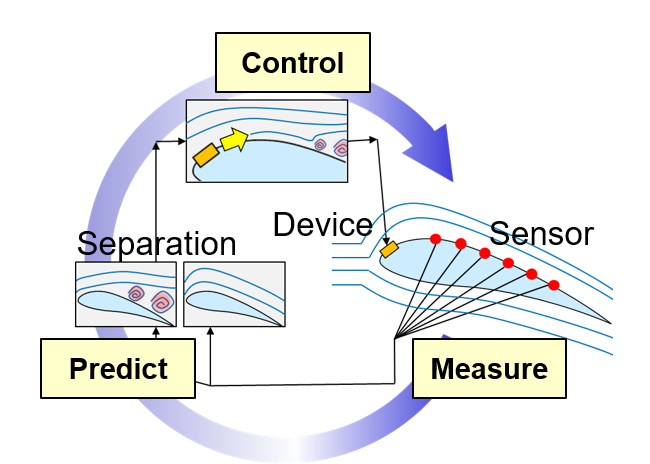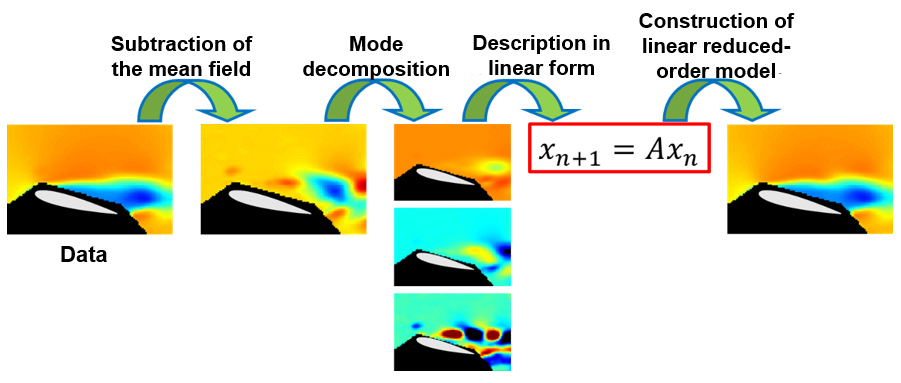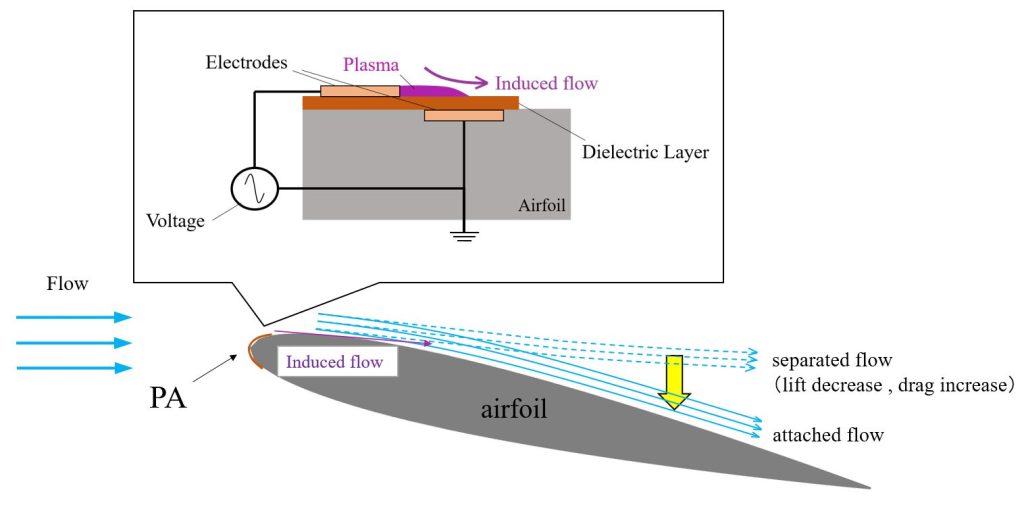About Flow Control Group
The flow control group is studying the optimal feedback flow control system. In the system, a certain state variable is measured by sensors inside the wing of the aircraft, and the future flow state is predicted. And then, the optimal flow control is conducted based on the predicted flow state. Traditionally, flow control has mainly been conducted by passive flow control devices such as vortex generators. Also, flaps and slats which are complicated mechanical devices are adopted in the aircraft wing, but these methods are known to have degraded effectiveness in the out-of-design point. Therefore, in order to further improve the aerodynamic performance of the airfoil which is exposed to various conditions (mainly angle of attack), real-time and adaptive flow control is necessary.

Feedback Control of Flow Field
1. Flow Field Measurement via Sparse Sensor
The present study is focused on the optimization of the measurement. It is necessary to realize the future flow state faster than the change of the flow in order to realize optimal feedback flow control. The flow around the airplane is so fast that it is necessary to reduce the measurement points while minimizing the loss of information for fast and accurate predictions. In the measurement team, we are studying the method to estimate the entire flow field with high accuracy from the information of limited sensor points.

2. Flow Field Estimation by Reduced Order Model
The prediction team is focused on the prediction of the future flow state with high accuracy. It is necessary to apply the control input against the future flow state, instead of applying that against the current flow state to realize the optimal feedback flow control. In the prediction team, we are studying the method to construct the prediction model in high accuracy and to predict the future flow state in real time. The characteristic of the flow field structure is extracted by applying proper orthogonal decomposition (POD) to the time series data of the flow field obtained by particle image velocimetry (PIV). We are trying to solve the problem by constructing a lightweight prediction model that expresses the flow field by superposing the extracted modes. In addition, with a view to actual control, we are also constructing a prediction model for when a control input is applied using a plasma actuator and a model for estimating the flow velocity field from the pressure distribution on the model.


3. Flow Control using Plasma Actuator
The control group is focused on the active flow control using plasma actuators. Flow separation can significantly reduce the performance of fluid machinery. Therefore, research on fluid control devices for controlling flow separation has been actively conducted for a long time. In recent years, active research has been conducted on devices such as plasma actuators and synthetic jets that have high responsiveness and can be actively controlled. In this research, we are conducting research on fluid control using plasma actuators, and we are pursuing exploration of the separation control effect and control mechanism of airflow around blades, effective control parameters through visualization of aerodynamic force, pressure distribution, and flow. Recently, we have been studying the control effect of a plasma actuator in a dynamic stall flow by conducting an experiment that simulates the flow around a helicopter blade whose angle of attack changes rapidly.

